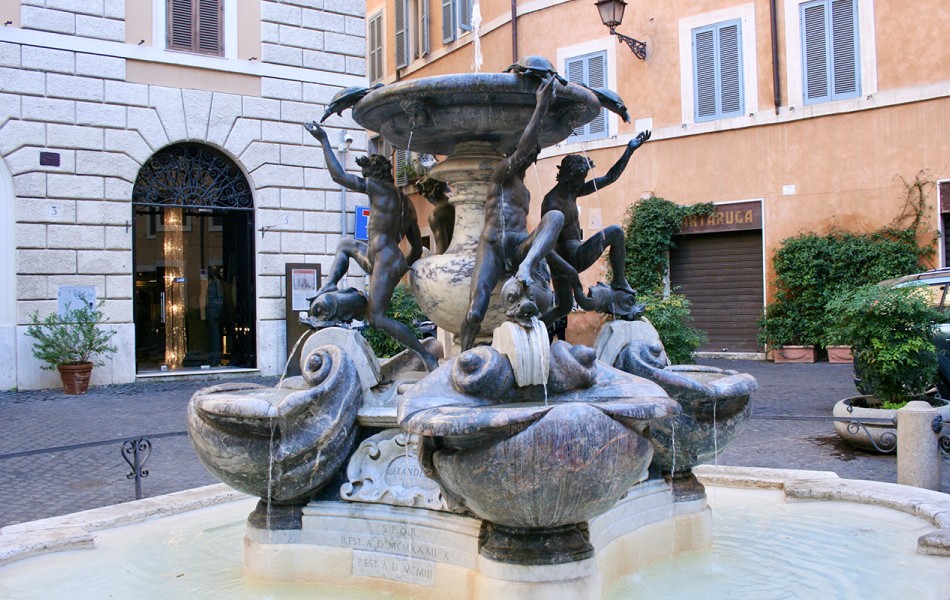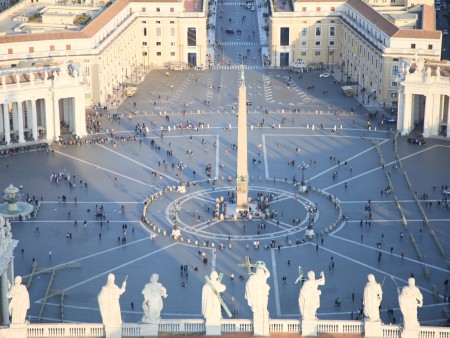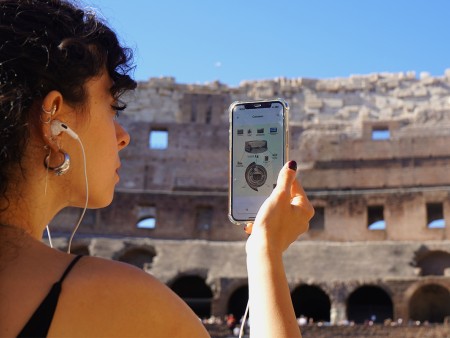How to Discover the Turtle Fountain in Rome's Piazza Mattei
Discovering Piazza Mattei among noble palaces, the ancient Jewish Ghetto, and other hidden gems in the heart of the Capital

22 August 2024
Rome Off the Beaten PathRome is a city that never ceases to amaze, with its hidden corners and artistic treasures scattered throughout its streets and squares. Among these charming and historic places is Piazza Mattei, located in the heart of the Sant'Angelo district, the smallest and one of the oldest districts in Rome. This square is best known for the splendid Turtle Fountain, a gem of late Renaissance Rome.
History of Piazza Mattei
Piazza Mattei is named after the noble Mattei family, who dominated the surrounding area from the 15th century onwards. The Mattei were one of the most influential families in Rome and owned numerous palaces in the Sant'Angelo district. The entire area around the square was known as the "Isola Mattei" due to the strong presence of the family.
Over the centuries, the square has witnessed historical events and architectural transformations. Although today Piazza Mattei is a small and quiet pedestrian area, it was once an important crossroads within the Jewish Ghetto of Rome, established in 1555 and only abolished in 1870.
The Turtle Fountain
The true jewel of Piazza Mattei is the Turtle Fountain, one of the most elegant and fascinating fountains in Rome. Built between 1581 and 1588, based on a design by the architect Giacomo Della Porta, the fountain is a refined example of Renaissance art. The work was commissioned by Muzio Mattei, probably as a gesture of gratitude to the City of Rome for allowing the family to renovate their palace.
The fountain features a circular structure with a marble basin in the center, from which a pedestal decorated with four bronze ephebes (young men) rises, sculpted by Taddeo Landini. These ephebes are depicted holding up four dolphins, from which water originally flowed. However, the most curious and famous detail of the fountain is the bronze turtles that seem to climb up the upper edge of the basin.
The turtles were added later, in 1658, under the direction of Gian Lorenzo Bernini or, according to other sources, Andrea Sacchi, to replace the original dolphins that had been stolen. This small additional detail gave the fountain its name and a distinctive touch, enhancing its charm and fame.
What to See Nearby
In addition to the Turtle Fountain, Piazza Mattei is an ideal starting point for exploring some of the most characteristic and historically rich areas of Rome.
-
Palazzo Mattei di Giove: Located right next to the square, this palace is one of the most important buildings of the Mattei family. Built between 1598 and 1618, it was designed by Carlo Maderno and houses a vast collection of artworks, including frescoes and sculptures. Today, the palace is home to the Library of Modern and Contemporary History.
-
The Jewish Ghetto: A few steps from Piazza Mattei is the Jewish Ghetto of Rome, one of the oldest in Europe. Walking through its narrow and fascinating streets, you can visit places of great historical importance, such as the Great Synagogue of Rome and the Jewish Museum.
-
Largo di Torre Argentina: Another site of great interest nearby is Largo di Torre Argentina, a square that houses the remains of four Roman temples from the Republican era. This archaeological area, also known for the presence of a colony of stray cats, is one of Rome’s most evocative sites. Largo di Torre Argentina is also famous as the location where Julius Caesar was assassinated in 44 B.C., making it a site of extraordinary historical value.
-
Campo de' Fiori: Another nearby historic square is Campo de' Fiori, famous for its morning market and the statue of Giordano Bruno. The square is surrounded by cafés and restaurants and is an ideal place for a break during your visit.
Piazza Mattei and its Turtle Fountain are a perfect example of the discreet and rich charm of Rome's history. This small corner of the city, though less known than other tourist destinations, offers an authentic and fascinating experience. Visiting it means immersing yourself in a past era, surrounded by the beauty and art that only Rome can offer.
Our categories:
You may also be interested ...

Vatican Private Tour with Sistine Chapel & St. Peter's Basilica: Renaissance’s Wonders
Private tour
Discover with a skip the line Private Vatican Tour the Sistine Chapel, Vatican Museums and St Peter’s Basilica
starting from: € 275

Colosseum Guided Audio Tour with Roman Forum and Palatine Hill
Private tour
Discover Ancient Rome’s secrets and history with our immersive Colosseum guided audio tour, rich in image and content
starting from: € 51 € 42